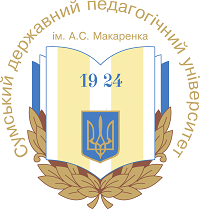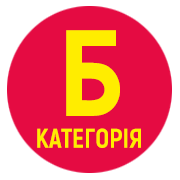COMPARATIVE ANALYSIS OF COMPETITIVE PERFORMANCE INDICATORS OF MEN AND WOMEN IN FREESTYLE WRESTLING
DOI:
https://doi.org/10.32782/olimpspu/2025.1.24Keywords:
freestyle wrestling, competitive performance, indicators, men, women, gender studiesAbstract
Freestyle wrestling is one of the oldest and most popular combat sports, included in the Olympic Games and other prestigious international competitions. This sport requires athletes to have a high level of physical fitness, excellent coordination, endurance, strength, and reaction speed. The analysis of competitive performance in men’s and women’s freestyle wrestling allows for identifying key features of match execution, assessing the effectiveness of technical and tactical actions, and developing more precise and effective training programs for athletes. Research in this area is crucial for coaches striving to improve their athletes’ performance and for sports analysts studying trends in the development of freestyle wrestling as a sport. The purpose of this study is to conduct a comparative analysis of competitive performance indicators of male and female freestyle wrestlers. The analysis was based on protocols and video recordings of the 2024 Ukrainian Freestyle Wrestling Cup among adults. A total of 151 matches were analyzed: 97 male matches and 54 female matches. The conducted research highlights some similarities and differences in competitive performance indicators between male and female freestyle wrestlers.It was determined that the most commonly executed techniques were gut wrenches in the parterre position and leg attacks and throws in the standing position. More points were scored in the standing position than in the parterre, and technical points exceeded non-technical points for both male and female wrestlers. The highest number of points was scored in the first minute of the match (23,18% of total points for men and 39,28% for women). Notably, the number of points scored decreased with each subsequent minute for both male and female wrestlers. This may be explained by the importance of the initial minutes in achieving victory in a match. The average number of points scored per match was significantly higher (p<0,05) for male wrestlers (9,34 points) compared to female wrestlers (8,20 points). However, the success index was higher for female wrestlers (2,48) than for male wrestlers (2,19), though this difference was not statistically significant (p>0,05). The obtained results will help coaches optimize the training process for male and female freestyle wrestlers.
References
Голоха В. Л., Романенко В. В. Аналіз виступу борців на Чемпіонаті України 2020 року з вільної боротьби. Єдиноборства, 2021. №1(19), С. 12-19. https://doi.org/10.15391/ed.2021-1.02
Латишев М., Головач І., Поляничко О., Єретик А., Лахтадир О. Важливість досягнень на змаганнях U23 з вільної боротьби. Єдиноборства, 2023. №2(28), С. 79-89. https://doi.org/10.15391/ed.2023-2.07
Шандригось В., Блажейко А., Латишев М. Стан і перспективи розвитку вільної боротьби в Україні. Єдино- борства, 2022. №2(24), С. 96-116. https://doi.org/10.15391/ed.2022-2.09
Deliceoğlu G., Tortu E., Keleş A., Çakar A. N., Özsoy H. Ö., Atalay T. A. Comparison of Physical And Physiological Profiles Between Elite Freestyle Men And Women Wrestlers. European Journal of Human Movement, 2023. №50, Р. 103-124. https://doi.org/10.21134/eurjhm.2023.50.11
Gierczuk D., Wójcik Z. Physical fitness of highly qualified female and male wrestlers of various sports levels. Journal of Physical Education and Sport, 2023. №23(6), Р. 1488-1494. https://doi.org/10.7752/jpes.2023.06182
Sadeghipour S., Mirzaei B., Korobeynikov G., Tropin Y. Effects of Whole-Body Electromyostimulation and Resistance Training on Body Composition and Maximal Strength in Trained Women. Health, sport, rehabilitation, 2021. №7(2), Р. 18-28. https://doi.org/10.34142/HSR.2021.07.02.02
Ceylan В., Balci S. S. Dehydration and Rapid Weight Gain Between Weigh-in and Competition in Judo Athletes: The Differences between Women and Men, Research in Sports Medicine, 2023. №31(4), Р. 462-472. https://doi.org/10.1080/1 5438627.2021.1989435
Tarragó R., Bottoms L., Iglesias X. Temporal demands of elite fencing. Plos one, 2023. №18(6), e0285033. https:// doi.org/10.1371/journal.pone.0285033
Curby D., Dokmanac M., Kerimov F., Tropin Y., Latyshev M., Bezkorovainyi D., Korobeynikov G. Performance of wrestlers at the Olympic Games: gender aspect. Pedagogy of Physical Culture and Sports, 2023. №27(6), Р. 487-93. https:// doi.org/10.15561/26649837.2023.0607
Rutkowska K., Gierczuk D. Achievement Motivation and Emotional Intelligence in Elite Female and Male Wrestlers. Ido Movement for Culture. Journal of Martial Arts Anthropology, 2020. №20(1), Р. 14-22. https://doi. org/10.14589/ido.20.1.2
Pashkov I., Tropin Y., Romanenko V., Goloha V., Kovalenko J. Anlysis of competitive of highly qualified wrestlers. Slobozhanskyi herald of science and sport, 2021. №9(5), Р. 30-39. https://doi.org/10.15391/snsv.2021-5.003
Romanenko V., Golokha V., Aleksееv A., Kovalenko Y. Methodology for evaluating the mental performance of one-fighters for victorious computer technologies. Slobozhanskyi Herald of Science and Sport, 2020. №6(80), Р. 65–72. https://doi.org/10.15391/snsv.2020-6.010
Jansen A. E., McGrath M., Samorezov S., Johnston J., Bartsch A., Alberts, J. Characterizing head impact exposure in men and women during boxing and mixed martial arts. Orthopaedic journal of sports medicine, 2021. №9(12), 23259671211059815. https://doi.org/10.1177/23259671211059815
Menescardi C., Falco C., Ros C., Morales-Sánchez V., Hernández-Mendo A. Development of a Taekwondo Combat Model Based on Markov Analysis. Frontiers in psychology, 2019. №10, Р. 2188. https://doi.org/10.3389/fpsyg.2019.02188







